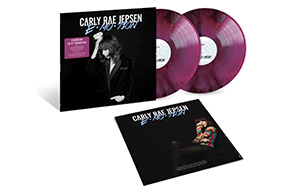‘My Songs’: A Life Lived Through Music, In Sting’s Own Words
‘My Songs’ finds Sting redefining the songs that have defined his life. In his own words, we go track-by-track through his musical autobiography.

Few artists have used music to chronicle the vicissitudes of life like Sting. From revisiting his childhood on the songs that made up The Last Ship, to directly addressing his grief over the loss of his father, on 1991’s The Soul Cages, Sting’s life story permeates his work with an emotional honesty rarely matched anywhere else in music. As such, it’s fitting that his latest album, My Songs, finds him revisiting his entire career with a collection of re-recordings that take his past and place it firmly in the present.
No mere exercise in nostalgia, though My Songs finds Sting looking back, he does so with his usual drive to push forward; to examine his past from the vantage point that he now finds himself in, and to draw connections between then and now. Restlessly creative throughout his entire career, every move he makes (pun very much intended) broadens his artistic horizons. My Songs, then, shines a new light on songs we thought we’d already got the full measure of, offering fresh insight not only into Sting’s artistic evolution, but into his worldview. As he puts it himself: “This is my life in songs. Some of them reconstructed, some of them refitted, some of them reframed, and all of them with a contemporary focus.”
Going track-by-track through My Songs, Sting has revealed the inspirations for the songs he has re-recorded, providing the closest thing we’ve yet had to the man’s life in his own words.
Listen to My Songs now, and scroll down to read Sting’s track-by-track commentary.
Brand New Day
First appeared on: Brand New Day (1999)
Recorded at a time rife with Y2K anxiety, “Brand New Day” proved two things: Sting was in no mood for baseless negativity, and that he would approach the new millennium as he had every other new era – as an opportunity to creatively reboot.
Closing the album of the same name, “Brand New Day” was – and remains – infectious in its energy. Sting’s optimism was at stark odds with the paranoia that defined the end of the 90s – and, in its new guise, “Brand New Day” has a refreshing clarity at odds with the anger and confusion that seems the world’s current default setting. A stronger electronic beat on the My Songs version acts almost as a pace-setter for Sting’s state of mind as the 2010s comes to a close, as he exhorts listeners to stand up for a brand-new day, rather than give in to defeat. (Don’t worry, that infectious harmonica line remains fully intact.)
Sting: “My long-standing strategy in life has been one of optimism, even in the face of some daunting realities. Brand New Day was written in 1999 well in advance of the millennium and was my personal attempt to allay irrational, existential fears based on arbitrary dates or the alignment of planets, or on the baseless Y2K threat. This is my version of whistling as you walk through the graveyard, I suppose, but then what could be more optimistic than Stevie Wonder’s harmonica as an accompaniment to the apocalypse?”
Desert Rose
First appeared on: Brand New Day (1999)
A seamless blend of world music and contemporary electronica, “Desert Rose” was further proof that Sting was retooling himself for the 21st Century. Collaborating with Gary Numan producer Kipper Eldridge and Algerian singer Cheb Mami, the results were beguiling, emotionally stirring, and outrageously catchy at the same time. And he made it all seem so damn easy…
A song like this is indestructible, and Sting knows it. Rather than deconstruct “Desert Rose,” for My Songs he piles on the drama, giving it an urgency no one could have anticipated in a pre-9/11 world. And why not? Countering a global move towards isolationism nationalism, “Desert Rose” is a much-needed reminder of the beauty to be found in other cultures – and the creativity that’s sparked when we live in harmony with them. And in an era when the basic facts of climate change are being challenged, the once simple statements “I dream of rain” and “I dream of fire” suddenly seem to take on a revolutionary fervor.
Sting: “‘Desert Rose’ was written in 1999 in Paris. I’d spent the summer there listening to and becoming fascinated with the Räi music popular in the clubs frequented by the expatriate Algerian community. I got to know some of the amazing musicians and singers there, some of whom performed on the record. Lyrically it was inspired by Sufi poetry, which often equates devotional and religious longing with the erotic.”
If You Love Somebody Set Them Free
First appeared on: The Dream Of The Blue Turtles (1985)
The first taste of Sting’s solo career, “If You Love Somebody Set Them Free” has always carried with it the sense of an artist shaking off his recent past as he embarks on a new course. With Branford Marsalis aiding Sting’s deep exploration of jazz music, it was the perfect set-up for an ensuing body of work for which, creatively speaking, anything would go.
The original arrangement perfectly captured the laidback confidence of a man finally relieved of his duties elsewhere. For My Songs, however, “If You Love Somebody Set Them Free” takes on a whole new meaning. Now set to a squelchy funk that more than hammers the message home, lines like “With so many riches, so many souls/With everything we see that we want to possess” can’t help but bring to mind the one percent, giving the song a new-found prescience concerning current economic inequalities.
Sting: “‘If You Love Somebody Set Them Free’ was written in early 1985, in a house I moved into in Hampstead in North London that I swear was haunted. It had formerly been a pub in the 18th Century, known then as The Three Ducks. I’ve no idea what went on there over the centuries, but there was a strange atmosphere in the house, not necessarily frightening but definitely uneasy and disturbing. Frank Oz of The Muppets had lived there prior to me, and before that one of Diaghilev’s prima ballerinas, Karasova. My intuition at the time was that some energy – something constricted and trapped within the psychic atmosphere of the house – needed to be released. Maybe the song came from this feeling. I moved across the park to Highgate soon after that… there were fewer ghosts.”
Every Breath You Take
First appeared on: Synchronicity (1983, The Police)
Welding his darker lyrical themes to his most unassuming melodies has allowed Sting to subtly subvert the charts – and nowhere is this more apparent than on “Every Breath You Take,” a song that the BMI has recently recognized as its most-played song of all time.
If the original Police recording is now hard-coded into the world’s musical DNA, for My Songs Sting takes the opportunity to give the musical arrangement a back seat. Whether or not that’s to force a renewed focus on those oft-misinterpreted lyrics, one resulting effect is clear: My Songs doesn’t only offer a new appraisal of Sting’s bullet-proof songwriting, but of his vocal prowess as well. Check out the bit where multiple Stings harmonize with themselves. His voice hasn’t aged a bit.
Sting: “I brought ‘Every Breath You Take’ into Utopia Studios in North London late one night in 1982. I’d already written the lyrics while staying at GoldenEye, Chris Blackwell’s house outside of Ocho Rios in Jamaica that had formerly belonged to James Bond’s creator Ian Fleming… The music was based on the ninth chords that I’d already used successfully in ‘Message In A Bottle’ and ‘Da Do Do Do…,’ which had become a sort of signature for me… It still manages to be both sinister and oddly comforting, which might explain its continuing prevalence as one of the most played songs on the radio.”
Demolition Man
First appeared on: Nightclubbing (1981, Grace Jones)
If you’re looking for evidence of the malleability of Sting’s songs, look no further. Originally recorded by Grace Jones, the first anyone heard of “Demolition Man” was her carefully intoned, dubbed-out version recorded at Compass Point for the Nightclubbing album. Released eight months later, The Police’s take on the song, recorded for the Ghost In The Machine album, welded a ska horn line to their increasingly complex rhythm section and a beautifully fractured solo by Andy Summers, yet still managed to hold its own on rock radio. Try to work that one out.
It’s those rock threads that Sting teases out for his My Songs re-recording, the line “Strapped to the wing with the engine running” seeming tailor-made for the full-throttle approach he takes to the song. Why the urgency? Surely the political undercurrent of the “three-line whip” line has something to do with it… Who the “demolition man” is today, however, probably depends on what government you’re sitting under.
Sting: “I wrote ‘Demolition Man’ during the summer of 1980, living in Peter O’Toole’s house in Connemara, Ireland. Peter liked the lyrics, especially, ‘I’m a three-line whip/I’m the sort of thing they ban,’ a three-line whip being a British parliamentary term for an emergency vote. I never imagined my A-level in the British Constitution would eventually bear fruit in a rock’n’roll lyric.”
Can’t Stand Losing You
First appeared on: Outlandos D’Amour (1978, The Police)
If the My Songs version of “Every Breath You Take” reveals fresh nuances in Sting’s vocals, putting the 1978 “Can’t Stand Losing You” alongside its 2019 counterpart offers a comparison of perspectives separated by age. In its original guise, “Can’t Stand Losing You” is a petulant outburst from a 20-something youth caught within the red-hot fury of a break-up.
Contrastingly, lived-in experience permeates the My Songs recording. While the spiky rhythm guitar carries traces of the frustration of the original – and anchors the song in its reggae roots – there’s almost a tinge of resignation in this version. “I’m not prepared to go on like this” felt like, if not quite a threat, certainly a charged statement in The Police’s recording, it now comes across as the conclusion of a man who knows when to pick his battles.
Sting: “Written in my basement flat in Bayswater in 1978, ‘Can’t Stand Losing You’ is a nasty little revenge fantasy inspired by nothing in particular, apart from the deliberately bratty chords. As in ‘Every Breath You Take’ and ‘Demolition Man,’ there is something cathartic, even therapeutic, in role-playing these less than savory characters… or maybe they’re actually parts of my own subconscious that would otherwise remain hidden.”
Fields Of Gold
First appeared on: Ten Summoner’s Tales (1993)
After turning out some of the most complex music of his career in the 80s, Sting had very little to prove in the 90s – other than that he could do all that and more, while distilling his influences into an even more radio-friendly sound that belied the intricacies of his arrangements. As its title suggests, “Fields Of Gold” positively glistens, its plucked guitar notes adding a classical nuance to Sting’s established jazz-infused palette.
Taking the less-is-more approach to its natural conclusion, the My Songs “Fields Of Gold” is stripped even further back than its predecessor, placing the melody in an altogether more sumptuous sound bed and giving it plenty of room to breathe. If the original felt like an elegy for lost love, the new version is, somehow, delivered with an optimism that wasn’t always apparent. Not bad for a song whose inspiration seems a million miles away from either interpretation…
Sting: “‘Fields Of Gold’ was written in Lake House in the summer of 1992. The house is surrounded by barley fields, and that year a beautiful crop circle appeared one morning. Whoever or whatever accomplished this astounding overnight feat was quite evidently a mathematical genius, whereas some of the more shambolic examples I’ve seen are clearly the work of drunks after one too many ales in the local pub.”
So Lonely
First appeared on: Outlandos D’Amour (1978, The Police)
Almost a sequel to “Can’t Stand Losing You,” “So Lonely” found Sting among the ruins of a broken relationship, struggling to move on from the shock of his split, but marrying the sentiment to a singalong chorus that gave the song a universal relatability beyond its woebegone sentiments.
Now, however, Sting now affords himself a bit of irony with his new recording, almost playing “So Lonely” with a wink and a nudge. “Welcome to this one-man show/Just take a seat they’re always free?” Hardly. It’s songs like this that, from this distance, make Sting’s decades-long career seem inevitable.
Sting: “‘So Lonely’ was originally written for my band Last Exit in Newcastle in 1975 and transposed easily into a Police song on the 1978 album Outlandos D’Amour. It’s odd to be singing about loneliness in this ebullient manner, but maybe that’s therapeutic?
Shape Of My Heart
First appeared on: Ten Summoner’s Tales (1993)
There was almost something mystical about “Shape Of My Heart” – perhaps it’s the card-dealing imagery that sought to find meaning in chance events, and the ethereal arrangement that seemed to lift the song beyond earthly concerns.
On My Songs, however, Sting gives “Shape Of My Heart” a more lived-in feel, stripping the song back to its bare bones in order to allow years of accrued experience to come through. The random turns of a card dealer now almost conflate with the actions of an artist driven by a need to shuffle the deck with each new outing; the lyric “I know that diamonds mean money for this art/But that’s not the shape of my heart” carries extra significance in light of Sting’s ever-increasing body of work.
Sting: “‘Shape Of My Heart’ was written in 1992 in Lake House. Dominic [Miller, guitarist] brought this lovely descending minor cadence into the studio, and we spent the morning molding it into song form. I then took the recording on a long walk, asking the music to tell me a story. A few hours later I returned with the lyrics, explaining to Dominic that I’d found them under a tree.
Message In A Bottle
First appeared on: Reggatta De Blanc (1979, The Police)
Whether as part of The Police or as a solo artist, the tendency has always been to think of Sting’s songwriting for its complex arrangements and lesser-known chord structures. But he’s always been able to harness the power of the riff – and never more so than on “Message In A Bottle,” which, despite boasting one of those patented chord structures, remains one of the most kinetic songs The Police ever recorded.
Looking for proof? It’s the riff and nothing but the riff that drives the My Songs version home – repeatedly and without reservation. Sting has often couched his messages in allusive imagery and metaphor, but the effect here is to make it clear that, over and above all else, the desire to communicate has remained central to Sting’s urge to create.
Sting: “I wrote the guitar riff for ‘Message In A Bottle’ on my black Fender Strat in the back of a noisy van heading south on an autobahn between Düsseldorf and Nuremberg sometime in early ’79. I immediately knew that I was onto something with this circular riff, starting with an arpeggiated C#9, repeated in A9, then to B9, and finally F#9 resolving back to the beginning. It took me a while to find the right lyrical subject, but after a few false starts back home in my basement in Bayswater, a story emerged from the rising and falling tide of the music of some kind of Robinson Crusoe character stranded on a desert island and throwing a hopeful bottle out to sea. The countless bottles that are washed up in response continue to be a resonant and grateful metaphor in my life, but like all great rock’n’roll stories, it began with a riff.”
Fragile
First appeared on: … Nothing Like The Sun (1987)
If you’re going to send missives out into the world, you might as well make them resonate. With a melody that matched the song’s title, “Fragile” was a muted cry for peace that doubled as a humanist statement on existence, and which has lost none of its power over the years.
How to approach the song now, in the face of a world that seems intent on rolling back any of the progress made in the 30-plus years since its original recording? Don’t let the beauty of the melody fool you; there’s an ominous pulse to the My Songs version, and a Sting vocal that almost invites despair at a socio-political landscape that seems to have forgotten how delicate the balance of life needs to be in order for us to survive. “Nothing comes from violence and nothing ever could,” indeed.
Sting: “The lyrics for ‘Fragile’ were written during the recording of The Dream Of The Blue Turtles on Barbados in 1985, but I didn’t have a suitable musical setting until 1987 when I was living in the SoHo neighborhood of New York City, just messing around with some descending sixth chords, similar to the ones I’d used successfully on ‘Bring On The Night’ and later on ‘Never Coming Home.’ These recurrent motifs remind me that all of these songs are composed of the same building blocks of connective musical tissue.”
Walking On The Moon
First appeared on: Reggatta De Blanc (1979, The Police)
Unbelievably, “Walking On The Moon” was originally released on the tenth anniversary of the Moon landing. As the 50th anniversary of that seismic event rolls around, however, the star-gazing wonder of the original, reggae-inflected Police song takes on a very different feel.
With ever-increasing concern over the Earth’s stability, a new space race has been set in motion. Whether it’s water, minerals, or living space we need, some scientists feel that the survival of the human race depends on our ability to sustain life on other planets. Both Mars and the Moon have long been identified for their potential, and now the technology exists to explore that. But these are “giant steps” we’re taking, and Sting’s re-recording for My Songs is almost cautionary: if we don’t solve the ecological issues we face, are we wishing our days away on Earth?
Sting: “‘Walking On The Moon’ was written in the dead of night in a nondescript hotel room in Munich in 1979. I woke from a fitful sleep with this insistent bass riff in my head that wouldn’t allow me to return to sleep. Eventually, it would become ‘Walking On The Moon,’ inspired by Neil Armstrong’s lunar exploration, but the original lyrics were probably more prosaic – ‘walking ’round the room,’ perhaps.”
Englishman In New York
First appeared on: … Nothing Like The Sun (1987)
There’s always been something stately about “Englishman In New York,” Sting perfectly weaving the song’s jazz elements into his world music influence and that indefatigable knack for a catchy melody. A wry sense of humor, however, couldn’t help but undercut all that, with the song’s arch lyrics lending an irony that belies Sting’s worldliness.
Time, however, has brought “Englishman In New York” a new meaning. With Sting now one of rock’s elder statesmen, the “alien” outsider feels more like an insider, relaying lessons learned from a life properly lived.
Sting: “‘Englishman In New York’ was written in my apartment on West Broadway in New York City’s SoHo in 1987. I spirited myself away there to write, rarely venturing out except to get food. I’d leave Yo-Yo Ma’s recording of the Bach cello suites playing quietly on a loop while I slept, and I always managed to wake up refreshed with some notion buzzing in my head – not necessarily anything to do with Bach, but the comforting architecture of his music may have created the space for ideas to emerge.”
If I Ever Lose My Faith In You
First appeared on: Ten Summoner’s Tales (1993)
Though the whole premise of My Songs is for Sting to revisit key moments in his career, the original “If I Ever Lose My Faith In You” stands as a recording that would remain relevant today even if he’d never touched it.
In a “fake news” era where it’s even easier to be “lost inside” politicians’ lies, almost every line burns with portent. Giving the song an electronic makeover that brings it closer in sound to the electronica of Brand New Day allows listeners to draw their own connections between the technical advances of the late 90s and where such a scientific leap may have led us today.
Sting: “‘If I Ever Lose My Faith In You’ was written in Lake House in 1992, with a growing cynicism about the ability of our political class to tackle what I regarded even then as a menacing existential crisis in the wanton destruction of our delicate biosphere. I won’t claim a prescience about the dangers of technology, but doubts about our ‘miracles’ of science allied to militarism are there in the song. Incidentally and ironically, the album Ten Summoner’s Tales from which the song came was the first successful purchase on the internet, on August 11, 1994.”
Roxanne
First appeared on: Outlandos D’Amour (1978, The Police)
The well-known tango reinvention of “Roxanne” now seems like a stroke of genius, giving the song a whole new context in the ballroom-dancing world, while enhancing the after-dark subject matter that inspired it. So what better way to reinvent the reinvention than to double down on the original?
Recorded live at Paris’ Olympia in 2017, the version of “Roxanne” that closes My Songs turns up the amps, and amps up the drama. When he sings, “Told you once, I won’t tell you again – it’s a bad way,” this is no longer the youthful Sting romanticizing his rescue of a working girl in Paris’ red-light district, but an experienced traveler’s cautionary tale.
Sting: “It’s fitting that this version of ‘Roxanne’ is a live recording from Paris’ Olympia. The song began its life there in 1977. We were staying in a seedy fleapit of a hotel behind the Gare Du Nord, where I conflated the object of Cyrano De Bergerac’s romantic love with the working girls in the street below. The cadence of Gm followed by Dm over an F in the bass began to tell me a story that would change my life forever.”















Americo Parruque
May 26, 2019 at 6:05 pm
There is a story of Sting, for who want to know about him and his carear and The Polices carear.
Wonderful.